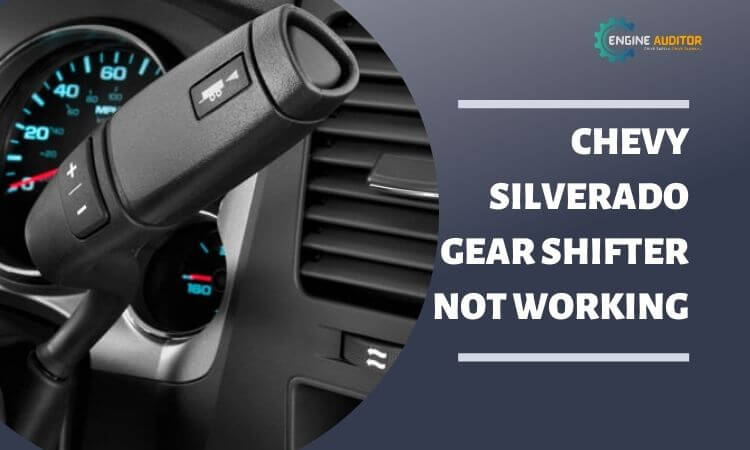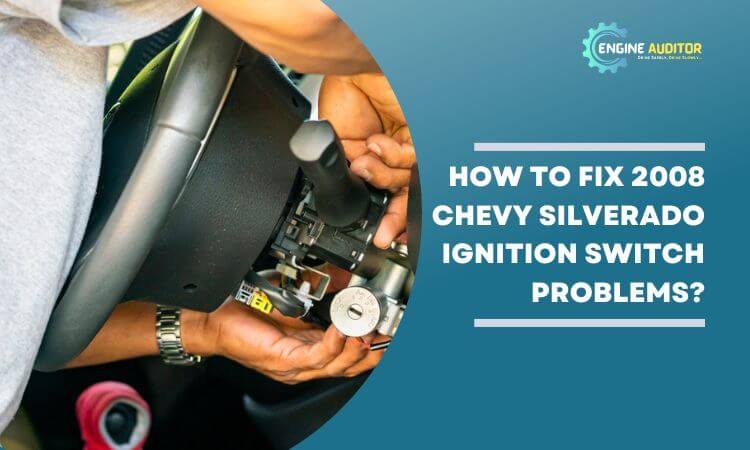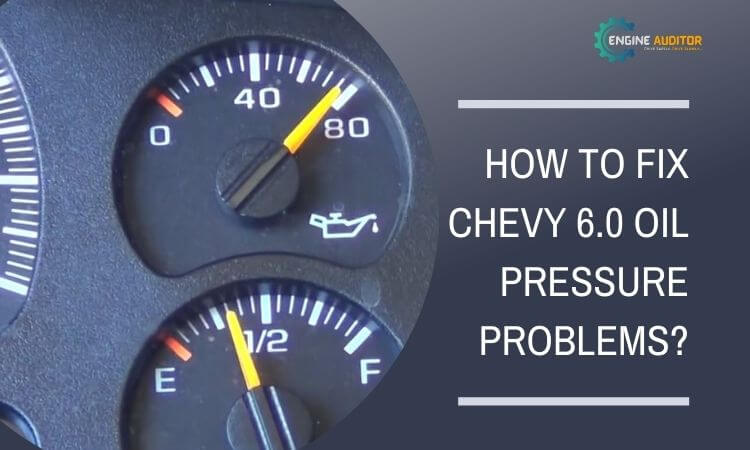Hey there! This post contains affiliate links to products. We may receive a commission for purchases made through these links. But it never influences our product selection process.
Positive Crankcase Ventilation or PCV valve is a pretty old mechanism used in Chevy Silverado to make the cars more efficient and eco-friendly. However, a PCV valve won’t stay good after 20,000 miles of driving. So, if you find problem in your Chevy 5.3 PCV valve, dont worry!!! It’s a common case and you can fix it if you know how to troubleshoot Chevy 5.3 PCV valve problems.
The most common symptoms of a bad PCV valve are performance drop, less mileage, engine stalling, etc. To troubleshoot, you mainly have to either clean the old valve or replace it with an OEM model.
One thing you should know is that the symptoms mentioned above can be caused by some other faulty engine parts too. That’s why you must make sure whether the PCV valve is truly at fault or not. Thus, here are some facts that can help you to know the condition of the PCV valve.
You may also like: 5.3 vortec high oil pressure problems and solutions
Where is the Chevy 5.3 Engine PCV Valve Location?
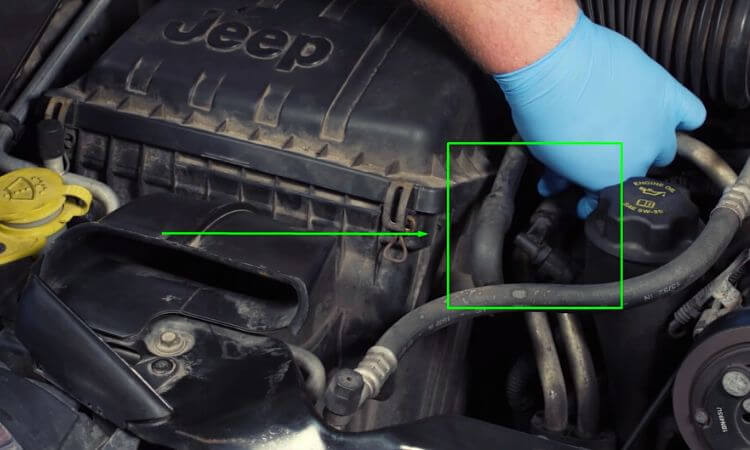
Before the troubleshoot, you must know where the PCV valves are located in your Chevrolet Silverado car.
If you open the hood of your car and go to the driver’s side, you’d see spark plug distributors. Behind those, there should be the valve cover. You can find the PCV valve right there.
Let me inform you that most cars with a valve system to regulate emission have their control valves located in the valve cover.
Chevy 5.3 PCV Valve Problems: 5 problems and explanation
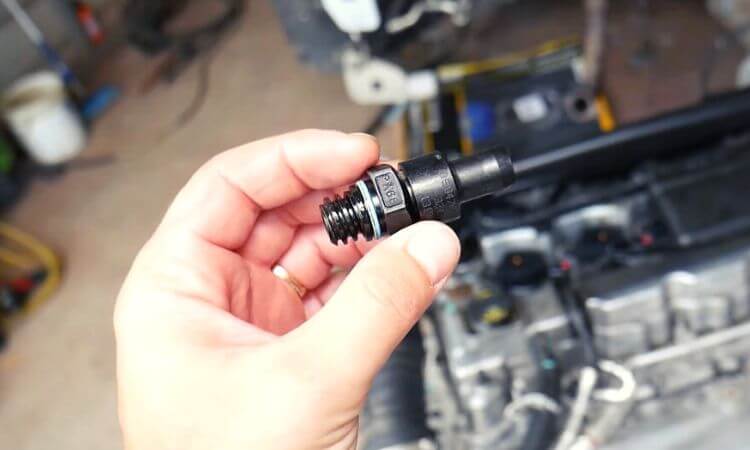
A bad PCV valve can put both direct and indirect effects on the engine mechanism of a Chevy.
Therefore, you should only be aware of the most common causes to identify and take necessary steps against the problem.
Here are the 5 noticeable 2005 Chevy Silverado PCV valve problems that you need to be aware of.
- Less Mileage
- Rough Idling
- Engine Misfiring
- Uncommon Smoke from Exhaust
- Check Engine Light Blinking
You may also like: How To Fix Chevy 6.0 Oil Pressure Problems?
01. Less Mileage:
The biggest problem with a clogged or bad PCV valve is that your engine would leak oil frequently.
When the valve gets clogged, the pressure rises in the crankcase. Because of that. Oil might come out of unwanted spots whenever you drive the car.
By this, your engine mileage drops on a large scale.
02. Rough Idling:
It’s already mentioned that faulty PCV valves reduce engine performance. Due to some unusual impacts on the intake manifold, the RPM of the engine stays unstable. And for that, the result is the stalling engine, unusual idling, bad engine sound, etc.
03. Engine Misfiring:
A PCV valve often returns gas or mixture containing more than 50% fuel in the combustion chamber.
If the valve stops working, the ignition system starts to misfire just because of the lack of fuel.
The exact same thing can also happen if the fuel leaks or overflows into the chamber because of a dead PCV valve.
04. Uncommon Smoke from Exhaust:
Another noticeable symptom is uncommon smoke from the exhaust pipe. When the PCV valve is blocked, it causes the burn of the oil inside of the engine.
Basically, because of the blocked PCV valve, the crankcase pushes up the oil into the combustion chamber. While the oil burns, the exhaust pipe emits blue smoke.
Sometimes, you would notice white or black smoke as well. So, if you notice uncommon smoke from the exhaust pipe, check the PCV valve without any delay.
05. Check Engine Light Blinking:
In the modern four-wheelers, the computer with the engine always diagnoses the performance and notifies about any existing problem throughout the Check Engine Light and DTC or PCM trouble codes.
Even if the 4 problems mentioned above occur, the light would blink and tell you to check the engine status to troubleshoot.
So, it’s obvious that the CEL would blink because of any issue caused by Chevy’s PCV valve.
How to Troubleshoot Chevy 5.3 PCV Valve Problems?
Now, it’s time to tell you how you can fix the clogged PCV valve with minimal effort.
If you’re not a person who likes to read much, you can also see this video to get a clear concept of the whole stuff.
Apart from it, the steps below would come in handy to resolve the issue that is being focused on today.
Identify the PCV valve’s location:
Earlier in the article, there has been a discussion on the location of the 2006, 2009, and 2005 chevy Silverado pcv valve location, the valve cover. You can easily follow that guide to find out where the valve is located in your car.
Dismantle PCV parts & inspect:
PCV valves are connected with an L-shaped pipe and secured with the help of a grommet. You can either remove and separate them with your hands or a hand wrench.
After separating the parts, check for any leaks, damages, or clogged areas in those components.
You can check the PCV valve by taking it into your hand and shaking it. If the valve rattles, then it’s okay to use after cleaning properly. Or else, you might need to replace it.
Replace the damaged parts:
If you need to replace the valve, then check GM 12567915, which is also recommended by General Motors, the manufacturer of Chevrolet.
But be sure to check the compatibility of the OEM parts with your engine before purchase.
Along with that, you can also change the hose when it’s too clogged. It’s better to use a new L hose than reuse the old clogged one.
Here, the recommended model that you can use is GM 93441238.
Clean other stuff & reinstall:
After replacing the Silverado or chevy 350 PCV valve components, reinstall everything back to the right place.
But before that, take a soft cloth or toothbrush and clean the deposits from the insert of the valve. You should also clean the grommet or O-ring before installing again.
Any More Questions?
Does a 2005 Chevy Silverado have a PCV valve?
Yes, the 2005 Silverado has a PCV valve installed. 2005 chevy Silverado 1500 PCV valves are very essential and popular models to keep up the car’s performance.
What happens if you drive with a bad PCV valve?
The first thing you’d notice is the lack of fuel economy. Along with that, the car might start to show you DTC engine codes. But the most annoying thing a bad PCV valve could do is cause engine misfire or rough idling.
Can a car run without a PCV valve?
You can drive a Silverado car for some distance without a PCV valve. But it is for emergency purposes only.
How much does it cost to fix a PCV valve?
An OEM PCV valve from General Motors might cost 8-30$ in general. But if you hire an expert to do the job, it may cost you 80-100 dollars.
Closing Thoughts
Chevy 5.3 PCV valve problems aren’t hard to find. There are 5 basic symptoms of a clogged or damaged PCV valve discussed today. You can find some other similar issues when your Chevy’s PCV valve is no longer active properly.
As soon as you see those symptoms, you better start troubleshooting without any delay. The solution isn’t so hard that you must hire a mechanic. If you are able to maintain everything properly, things can be done without any extra cost.

